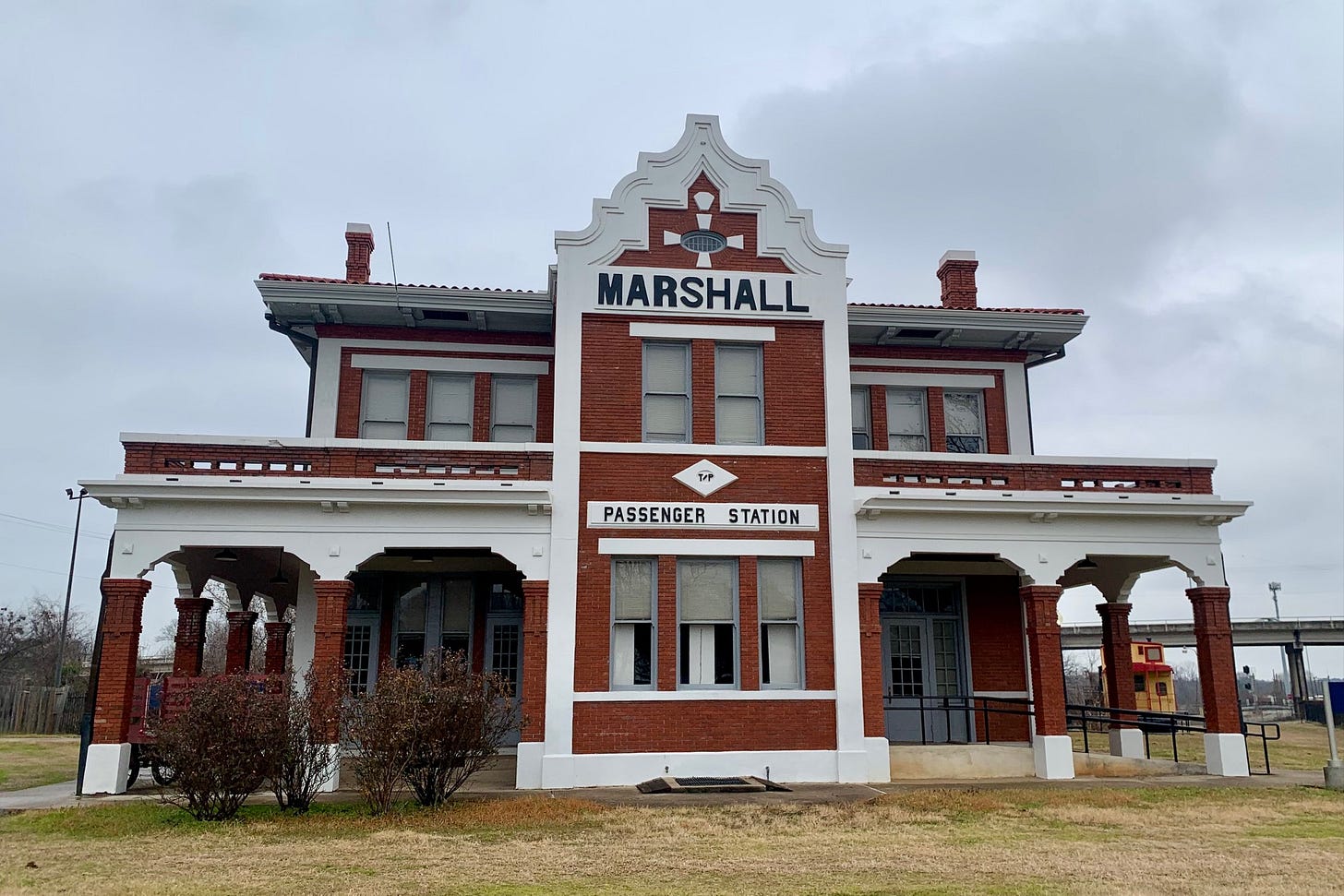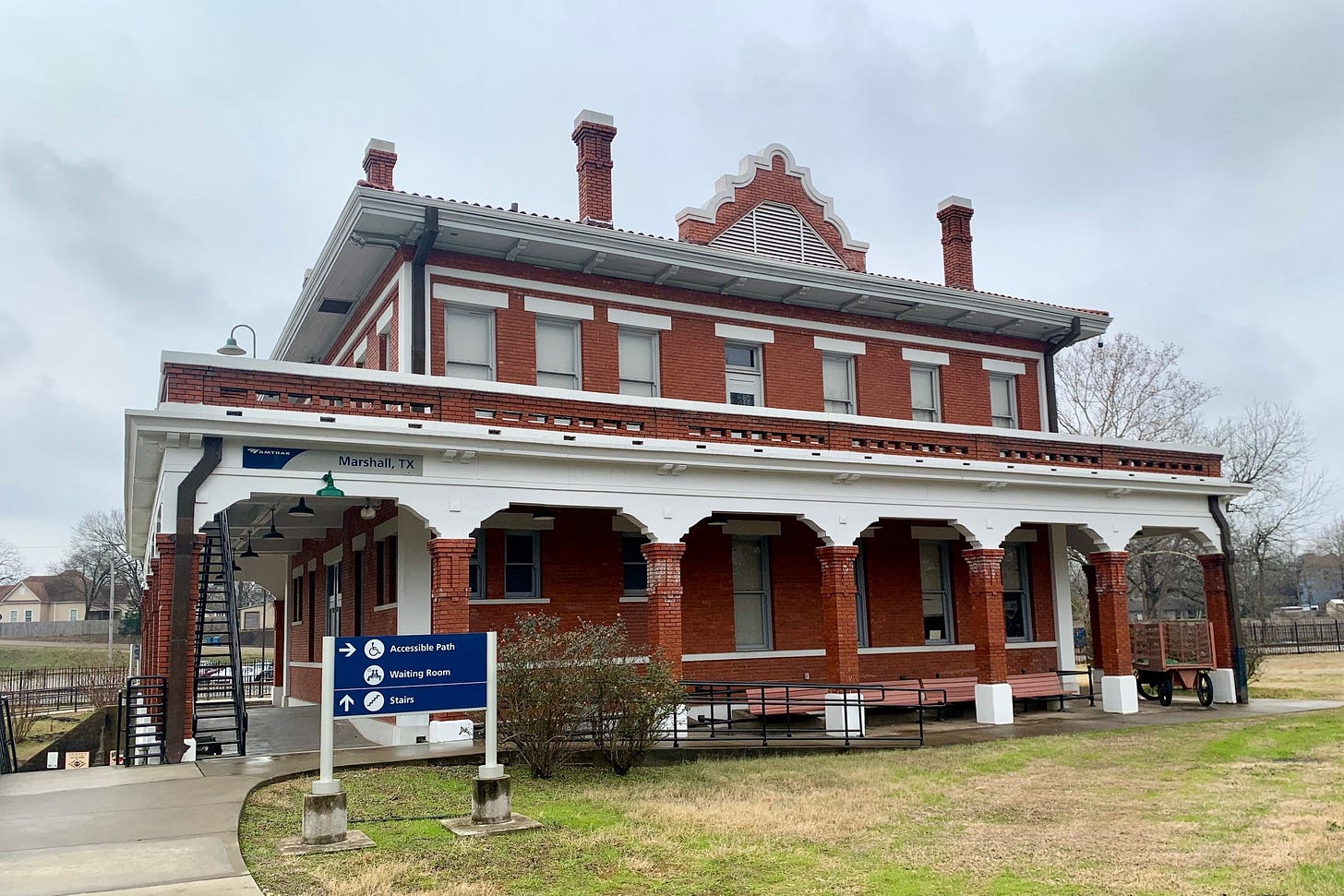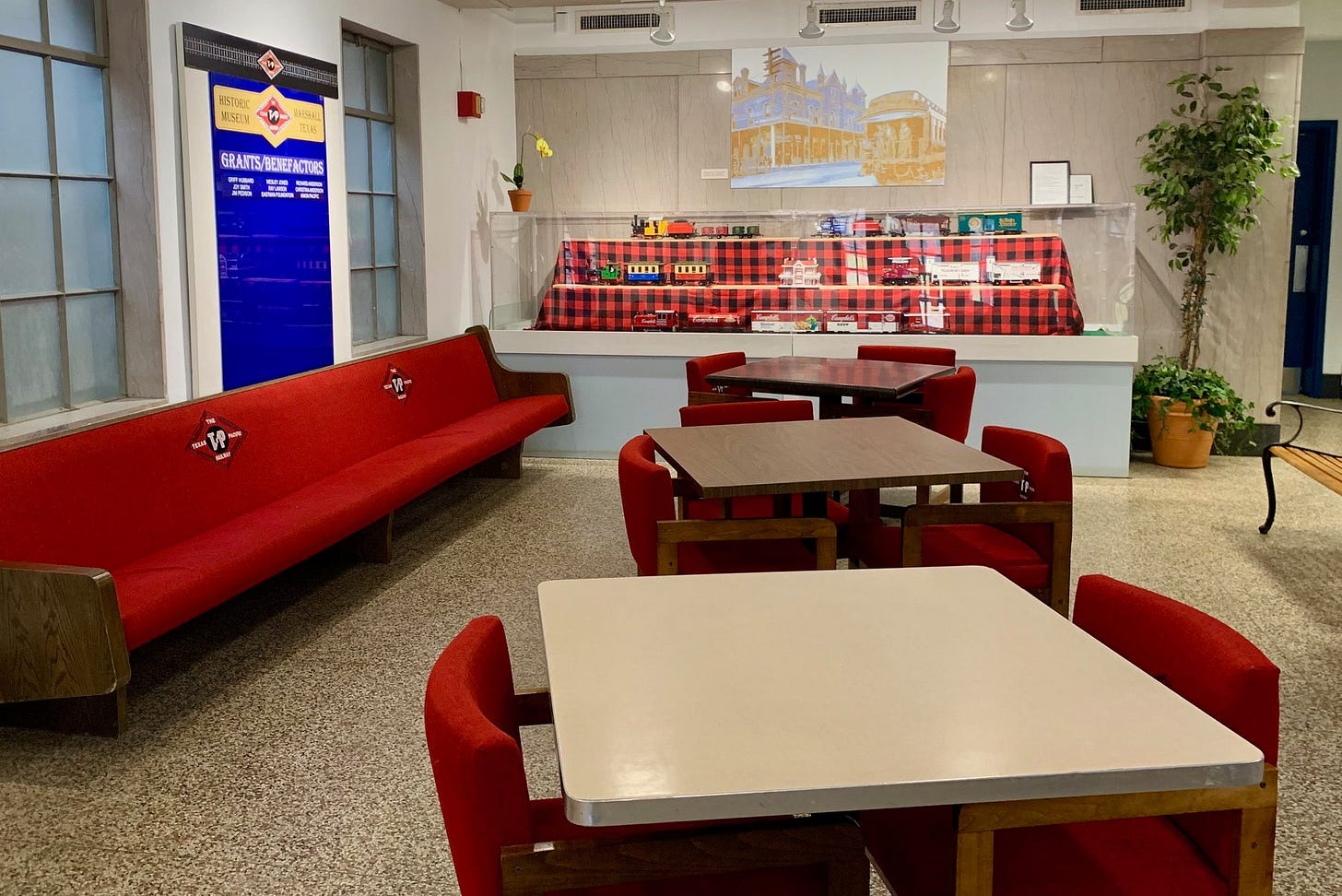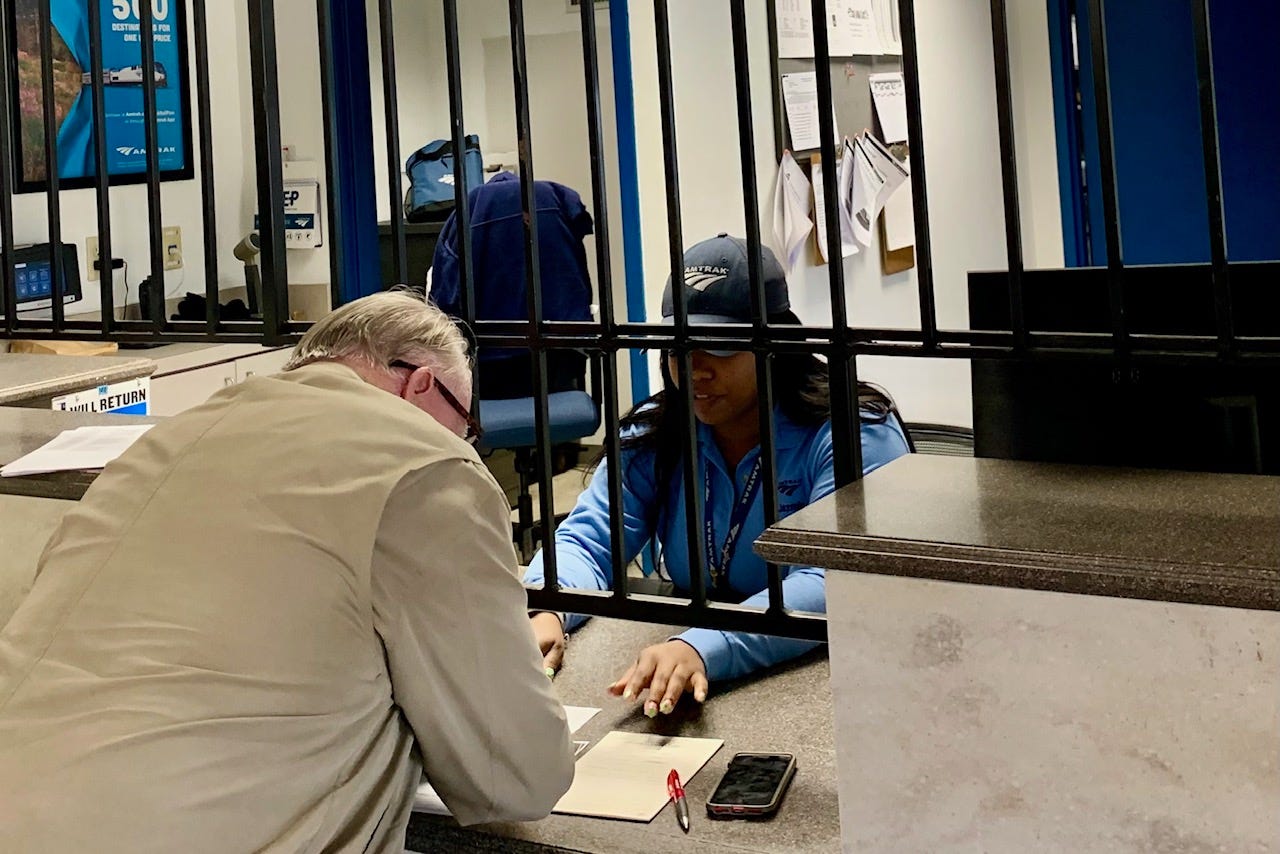Caltrain Electrification Sparks Jump in Ridership
LIRR Reports ‘Strongest Year to Date:’ NY Governor

Electrification is proving to be a winner for Caltrain, the Northern California regional rail line that links San Francisco with San Jose, Gilroy, and intermediate stops. In October, the first month of electrified service between San Francisco and San Jose, more than 753,000 people rode Caltrain, a 54 percent year-over-year increase.
Sizable ridership gains have been reported for every subsequent month. For December 2024 the passenger count was 588,000 – 41 percent higher than the same period in 2023.
Not only is Caltrain carrying more riders but it is getting them to their destinations quicker thanks to the EMU (electrical multiple unit) trainsets’ rapid acceleration. Express trains now take 59 minutes to run between San Jose and San Francisco, which is six minutes faster than the diesel-hauled trains the EMUs replaced. In addition, Caltrain has increased frequencies during off-peak hours and weekends which will make the train more convenient for local travel.
The new trains are greener than their predecessors, which generated enormous amounts of greenhouse gases and other pollutants. Also, through regenerative braking, a process that converts kinetic energy to electricity, Caltrain is returning to the grid almost one fourth of the power it consumes. Its annual electricity bill of $16.5 million is $3 million less than what planners forecast in their budgets.
Regional railroads where freight plays second fiddle to passenger service are probably the best candidates for converting from diesel to electric.
Caltrain is the first U.S. regional rail line to convert from diesel to electric since the Long Island Rail Road electrified its Ronkonkoma branch in 1987. Like Caltrain the LIRR saw a significant jump in ridership on the Ronkonkoma line following electrification. It is now one of the railroad’s busiest routes and was doubled tracked in 2018.
As a former Long Island commuter I am partial to electrified service provided by trains composed of EMU cars. The rail fan in me prefers trains hauled by diesel, electric, or, better yet, steam locomotives. The electrics are clearer and accelerate faster, which is a must when stations are less than a mile apart.
Why aren’t more regional railroads going electric? Partly, it is due to lack of funding and a belief in some agencies that the investment would not be cost effective. The other main reason: the freight railroads that regional lines traverse won’t allow it. A major derailment could knock down support towers for the catenary. This could disrupt service for days.
This Illinois Central Railroad built separate tracks for its electric suburban commuter trains to Chicago. The Lackawanna Railroad and its successor, the Erie Lackawanna, ran freight trains mainly over the non-electric Boonton Line instead of the Morris & Essex, which was busy with EMU commuter trains throughout the day. Separate tracks for regional tracks alongside busy freight lines may be too high a reach for some carriers.
Caltrain did not face this issue because the Peninsula Corridor Joint Powers Board owns the tracks and local freight trains are the only ones that use the route. Regional railroads where freight plays second fiddle to passenger service are probably the best candidates for converting from diesel to electric. Some possibilities:
MBTA Regional Rail Could start service on the Northeast Corridor between Boston and Providence at any time. It currently plans to use battery-powered trains on its Fairmont Line. Most of its other routes have little or no freight traffic, which makes them candidates for future electrification.
CT Rail Greatly expanded service since a double track project was completed in the last decade. Electrification would also enable Amtrak to eliminate power swaps in New Haven for Northeast Regional trains that originate or terminate in Springfield.
Long Island Rail Road Port Jefferson line commuters have been pleading for electrification east of Huntington for decades. For now not an MTA priority but that could change if LIRR advances plans for a new yard between Huntington and Port Jefferson.
NJ Transit Electrification south of Long Branch on the North Jersey Coast Line would speed vacationers, day trippers, and commuters down the Shore. Former Erie Railroad Main Line, Bergen County Line, and Pascack Valley Line would need to be electrified if a connection to the Northeast Corridor gets built.
MARC Tried electric locomotives on the Penn Line, aka Northeast Corridor, but switched back to diesel power. They could switch a second time in the future.
Virginia Railway Express Little freight moves over the Manassas line since Norfolk Southern routes its through trains via Front Royal and Hagerstown. The same, however, cannot be said for the Fredericksburg line, which sees heavy CSX freight traffic.
METRA Best electrification prospect, IMHO, is the Rock Island District between Joliet and Chicago’s LaSalle Street station. Amtrak might reroute Lincoln Service trains over this line in the future.
Trinity Rail Express Former Rock Island line between Dallas and Fort Worth has little freight traffic.
FrontRunner has its own tracks alongside the Union Pacific mainline between Salt Lake City and Ogden. Currently increasing double track section to offer higher frequency.
Banner Year for Long Island Rail Road
For many Long Islanders the Long Island Rail Road is the railroad you love to hate. But new performance figures released by the Metropolitan Transportation Authority suggest it is starting to get some real love and respect.
New York Gov. Kathy Hochul announced last month that 2024 was the “Long Island’s strongest year to date.” On time performance reached 95.65 percent, the highest since the MTA began to track in 1979.
Preliminary data showed the railroad carried 75.5 million passengers in 2024, a 15.8 percent increase over 2023. On November 27 284,694 passengers rode LIRR trains, the most since before the pandemic.
In addition, respondents to the railroad’s Fall 2024 customer satisfaction survey gave the line an overall score of 76 out of 100, a six point gain from the Spring survey. The 21,854 participants was 27 percent higher than the Spring survey.
“One of my main goals when I assumed the presidency of the LIRR was to create an amazing customer experience, every day, on every train,” railroad President Robert Free said in a statement. “This incredible jump in customer satisfaction shows that we are in fact achieving it.”
Since 2018 the railroad has placed into service three major infrastructure projects that increase capacity and improve resiliency: a second track between Farmingdale and Ronkonkoma on the Ronkonkoma Line, a third track and grade crossing eliminations between Floral Park and Hicksville, and the Grand Central Madison terminal on Manhattan’s East Side.
Early data suggest LIRR ridership is getting a boost from congestion pricing, a toll to discourage driving charged to motorists who enter Manhattan below 60th Street,. Passenger counts for January 2025 were 15 percent higher than a year ago.
Five stations have had significantly higher passenger traffic since congestion pricing began January 5: Douglaston, up 26 percent; New Hyde Park, 22 percent; Garden City and Woodmere, 19 percent, and Ronkonkoma, 18 percent.
Not everyone thinks the LIRR is doing a great job, however. In an article published in the Babylon Beacon and other local newspapers Juan Lasso points out that between 2022 and 2023 the number of late trains nearly doubled, from 8.691 to 17,064. It has since dropped to 11,480. He blamed operational issues such as scheduling conflicts, slow boarding, and late departures.
Historic Marshall, TX, Station Preserves Texas & Pacific Heritage
On our way to Texas last month we got off the interstate and drove to Marshall, TX, to photograph the historic Texas & Pacific depot there, which is served by Amtrak’s Texas Eagle. It was time well spent.
The depot, which opened in 1912 and is on the National Register of Historic Places, sits between two former T&P lines, one from Texarkana, the other from New Orleans, that converge in Marshall. It still has a ticket agent on duty and houses the T&P Museum and gift shop. Also on the property are a Texas & Pacific 2-8-2 steam locomotive and Union Pacific caboose you can tour. Here are some of the photos I took:










